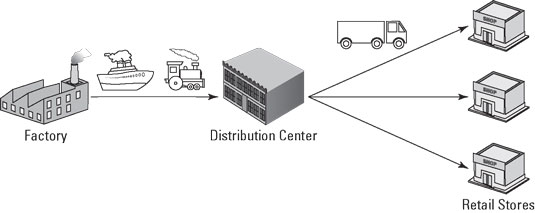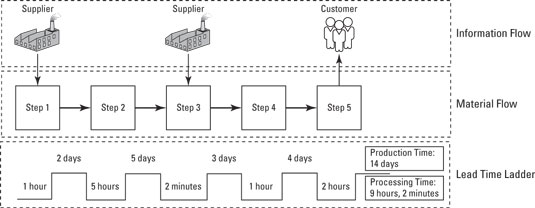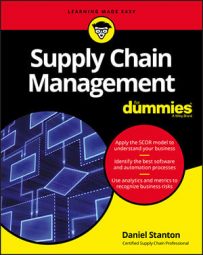 Nodes and links in a supply chain.
Nodes and links in a supply chain.Your goal for any supply chain is to deliver maximum value at the lowest cost. One way to achieve this goal is to change the nodes and the links. Perhaps you can lower the costs of your raw materials by sourcing them from a different supplier, which means you'd be changing one of your nodes. Changing a node also means changing the links that connect that node to the rest of your supply chain.
Making changes in the links and nodes is called network optimization. One approach to network optimization is called value-stream mapping (VSM). This figure shows a simple example of a VSM. The more of your supply chain that you're trying to optimize, the larger — and more complex — your VSM becomes.
 Example of a VSM.
Example of a VSM.Value stream mapping is an important part of a Lean professional's tool kit, as you'll see in the next section. However, network optimization can be done on a larger scale using sophisticated mathematical analysis. Several supply chain software platforms are available to help with analyzing supply chain flows, starting with spreadsheets and moving up to complex supply chain modeling tools. For example, in addition to factoring in the costs for buying materials and transporting them between nodes, some network optimization tools can factor in variables such as supplier performance and the effects of tariffs and taxes.

